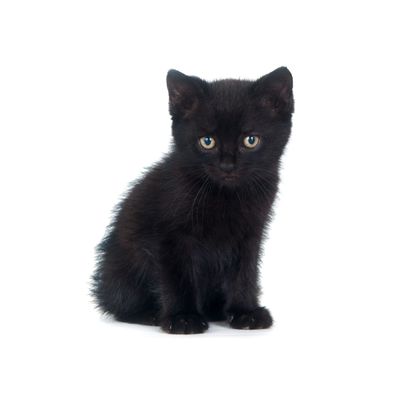
There’s a made-for-the-internet story floating around this week: According to a spokesperson from the Royal Society for the Prevention of Cruelty to Animals (as quoted by the U.K.’s Daily Telegraph), our current cultural obsession with selfies is to blame for the fact that shelters have a harder time adopting out black cats.
Really, though, it’s an old story with a modern twist: For years, decades even, animal welfare workers have complained about the problem of an overpopulation of dark-coated animals in shelters. The evidence for this problem has been mostly anecdotal, but shelter workers have said that animals with darker coats are indeed harder to photograph, which could spell trouble for more than just selfies, as it means they aren’t as easy for prospective pet owners to see on adoption sites like Petfinder. And the white and gray hairs that are normal for animals to grow around their snout as they age are more prominent in animals with black fur, making black cats and dogs appear older than they really are.
Taken together, all of this makes a compelling case for the idea that selfies are at least partially to blame for the proliferation of homeless black cats. But it’s not true, said Emily Weiss, vice president of shelter research and development for the American Society for the Prevention of Cruelty to Animals, according to her recent analysis of ASPCA data.
Black is indeed the most common color for both dogs and cats entering shelters, she said. It’s probably not because people are quick to abandon them, though, but rather because “the genes that are responsible for black coat color are dominant genes, and therefore one may assume there are more black cats in the general population,” Weiss explained in an email to Science of Us. So because there are more black cats in shelters, it does seem like they are more difficult to adopt out. “But in fact, in our data set we found more black cats were adopted compared to any other color,” she said.
Weiss used data from the ASPCA’s Comprehensive Animal Risk Database, which uses figures from 14 U.S. regions and includes information on about 300,000 dogs and cats. She found that black cats represented 31 percent of feline adoptions; next in line were gray (20 percent) and brown (18 percent).
In a post for the ASPCA’s blog, Weiss writes that all the well-intentioned concern over what people perceived to be a low adoption rate of black cats could actually end up backfiring, in a self-fulfilling prophecy kind of way. Many shelters in have started running fun specials designed to challenge the (false) idea that no one wants black cats — like this Seattle shelter that waived the adoption fee for black cats last year on Black Friday, or the Friday the 13th-themed deal the Pasadena Humane Society offered in 2012. But, Weiss warns, if you repeat too often the reasons black-furred animals are unadoptable, you run the risk that people may start unconsciously internalizing them – and then black cat (and dog) adoption rates really could drop. (Full disclosure: I was once part of the problem!)
But back to this “black cats don’t take good selfies” nonsense. Since these stories started circulating online, an army of cat ladies (and some cat dudes, too) has assembled to defend the photogenic nature of their black cats, by posting selfies with their pets to Twitter and Instagram; I myself am a foot soldier in this online cat-lady brigade. We’ll leave you with a few.

